
Nancy Pelosi’s style statements through the years
Pelosi is positioned to continue bestowing us with more captivating style moments as Speaker Emeritus
2023-10-07 17:20
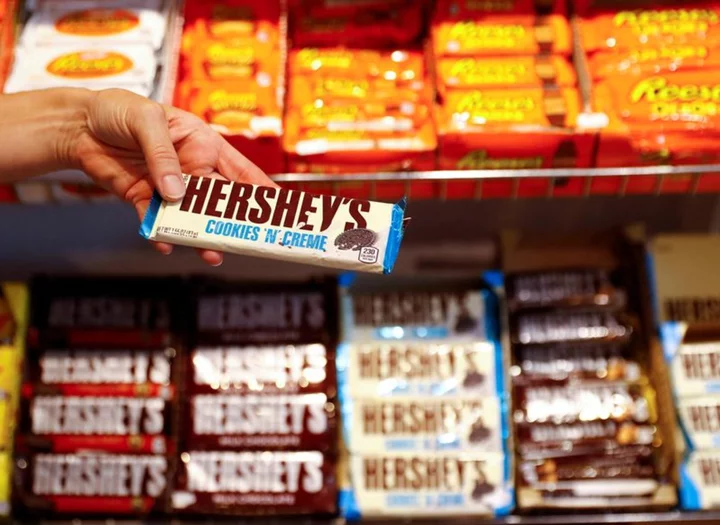
Hershey beats quarterly sales estimates
Hershey beat Wall Street expectations for quarterly sales on Thursday, riding on benefits from higher prices of its
2023-10-26 18:58

How Mauricio Pochettino can fix Chelsea, the messiest job in football
Make enough decisions and the law of averages dictates that even Todd Boehly will get the odd one right, sooner or later. In Mauricio Pochettino’s case, it is certainly later: Chelsea could have appointed him manager eight months ago and plumped instead for the sadly miscast Graham Potter. And so, as Pochettino’s task involves clearing up Boehly’s mess and turning chaos into something cohesive, it feels rather fitting that he begins with first-hand evidence that poor decision-making has consequences. If Pochettino is potentially the solution in this belated union, Chelsea may represent the problem. But it is significant that the supposed ethos of the new regime – before they instead became indelibly associated with chronic, clueless overspending and extraordinary underachievement – actually matched Pochettino’s principles. Much of his work at Stamford Bridge is simply to repeat the job he did at Tottenham, albeit with the significant caveat of adding trophies on top. But restoring a club to the Champions League, rebuilding relations with the support, engendering a feeling of positivity, developing young players and producing an exciting, attacking brand of football: Chelsea do not need to look far across the capital to see that Pochettino has already done that. And this, supposedly, was what Clearlake Capital was going to be about, not the hire-and-fire short-termism of Roman Abramovich’s Chelsea. Now, after two sackings in a season, Chelsea are in greater need of a Pochettino-style reboot. Admittedly, a complication is that, while Potter had a contract to 2027, Pochettino’s deal is only until 2025, with an extra year a club option. The undistinguished David Datro Fofana’s contract will still be twice as long as Pochettino’s; Mykhailo Mudryk’s will have a further six years. He begins hamstrung, to some extent, by Chelsea’s conviction that they had owned the future with their transfer-market business. If Thomas Tuchel used to describe the squad he took over as a “gift”, Pochettino’s inheritance is part present, part hospital pass. He needs the owners to have the competence to clear out the players he does not want; a task they seem to have underestimated amid the influx of signings. Part of Pochettino’s initial success at Tottenham entailed identifying a new core as he dispensed with senior figures such as Younes Kaboul, Emmanuel Adebayor, Aaron Lennon, Paulinho and Etienne Capoue. Chelsea could do with similar decisiveness and clarity of thought. They have used 32 players in the Premier League this season, second only to Nottingham Forest, and made over 130 changes to the starting 11, by far the most, which speaks of Potter’s unsuccessful compromises to involve everyone and Lampard’s muddled attempts to find a fix. With no European football next season, they have still less need of a cast of thousands. If Pochettino, with his prowess as a man-manager, may have to reengage some of the disillusioned and to unite the disparate parts of Chelsea’s squad, the actual number of players has to be manageable. He may have the initial impediment that Mason Mount, one of those best suited to his style of football, is a potential departure; Chelsea’s extravagant outlay has created a need to sell and too many others look either deadwood or unlikely to bring in meaningful fees. The danger is they lose those they want to keep and keep those they want to lose. Somehow, amid 16 signings and £600m of expenditure, Chelsea have created the perception that they still require at least three major additions: a goalkeeper, an actual defensive midfielder as their £107m midfielder, Enzo Fernandez, may not be one, and a striker. It is a difficult juggling act: one of the telling factors could be if Romelu Lukaku proves his Stamford Bridge version of Adebayor or Harry Kane. It was one of the damning elements of Potter’s reign that, despite an ability on the training ground that helped players at his previous clubs to progress dramatically, no one got better at Chelsea and many regressed. The exponential improvement of Tottenham’s youthful players – personified, in their different ways, by Kane and Dele Alli – and the way everyone reached new levels under Pochettino always offered reasons to choose and trust him. The latter element may be significant: the feeling is that too many of Clearlake Capital’s off-field appointments are yes men for Boehly and co. They have proved woefully poor judges and negotiations ought to have given Pochettino the licence to pursue his own path. Perhaps, after the madness of Paris Saint-Germain – though Chelsea is a different sort of madness and it is notable that Tuchel, the first manager Boehly sacked, accomplished more in the French capital than Pochettino – the Argentinian needs a project. Chelsea provide one: Andrey Santos and Malo Gusto will arrive in the summer and Levi Colwill is due to return to add to the battalion of young players – Mudryk, Fernandez, Benoit Badiashile, Wesley Fofana, Carney Chukwuemeka, Armando Broja, Noni Madueke, Marc Cucurella, Cesare Casadei, Lewis Hall – who provide the raw materials that could be shaped into something. In some cases, Pochettino will first have to repair dents to their confidence or game done in a disastrous season but at least some of that potential could be realised. It is nevertheless a remarkable scenario that a team who won the Champions League two years ago now seem to have to start from scratch but Pochettino has to provide an identity, to add a style of play to a team with none, to get goals from a side who have only outscored Wolves, Bournemouth, Southampton and Everton this season. It amounts to an astonishingly big job, because, in footballing history, elite clubs have rarely got as many things wrong as Chelsea have in the last year. But he has the pedigree and personality required to manage a superpower, which Potter lacked, and perhaps this year will engender an understanding that could buy him time. Because taking over Chelsea at such a low ebb means that, however quickly or slowly, there is surely only one direction in which they can go. Read More Football rumours: Barcelona set sights on Bruno Guimaraes Frank Lampard believes Chelsea standards have slipped as cheerless campaign ends Easy in the end for Manchester City – same again next season? Chelsea still a ‘fantastic’ job insists Lampard - but also a ‘problem’ Frank Lampard: Chelsea must avoid knee-jerk decisions if they are to recover Tottenham identify leading candidate to be next manager
2023-05-29 20:19

Lindelof rides to Man Utd's rescue to beat Luton
Victor Lindelof was Manchester United's unlikely hero as they moved into the Premier League's top six with a 1-0 win...
2023-11-12 01:26

No looking back for India 'team man' Shami
India captain Rohit Sharma on Saturday praised senior fast bowler Mohammed Shami for a spectacular renaissance at the World Cup after being ignored...
2023-11-18 23:15
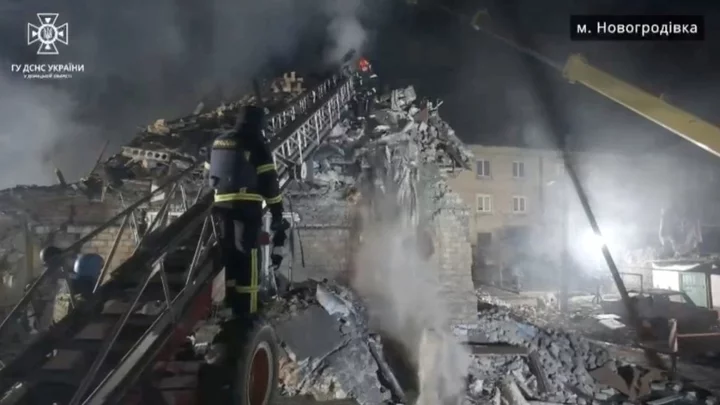
Russia-Ukraine war – live: Baby injured and families trapped under rubble as Putin’s troops hit record losses
Russian missiles have torn through apartment buildings in eastern Ukraine’s Donetsk region, killing at least two people, injuring a baby and burying families under rubble. The missiles hit three Donetsk cities, Pokrovsk, Novohrodivka and Myrnohrad, Ukrainian internal affairs minister Ihor Klymenko said. In Pokrovsk, Emergency crews helped rescue a man with a six-month-old baby, covered in blood, in his hands, officials said. The strikes destroyed a multi-storey building, nine houses, a police office and cars. Emergency workers pulled the body of a 62-year-old man from the wreckage of a destroyed multi-storey building in Novohrodivka. Four more people may be under the rubble, including a child, authorities said. It comes as statistics by a longtime Russo-Ukraine War military data researcher suggested Russian forces have faces record losses this month. Data published by Ragnar Gudmundsson said more than 25,000 Russian service personnel died or were severely wounded in combat in Ukraine in November. It added that an average of 994 men were killed a day during the previous week. Kremlin spokesmen have admitted Russian forces have suffered unexpectedly heavy losses during its invasion of Ukraine but accuse Kyiv of inflated claims. Read More Senior Russian general ‘killed by one of Putin’s own landmines’ in Ukraine Finland closes last crossing point with Russia, sealing off entire border as tensions rise Cameron condemns Moscow ahead of OSCE summit including Russian counterpart
2023-11-30 23:54
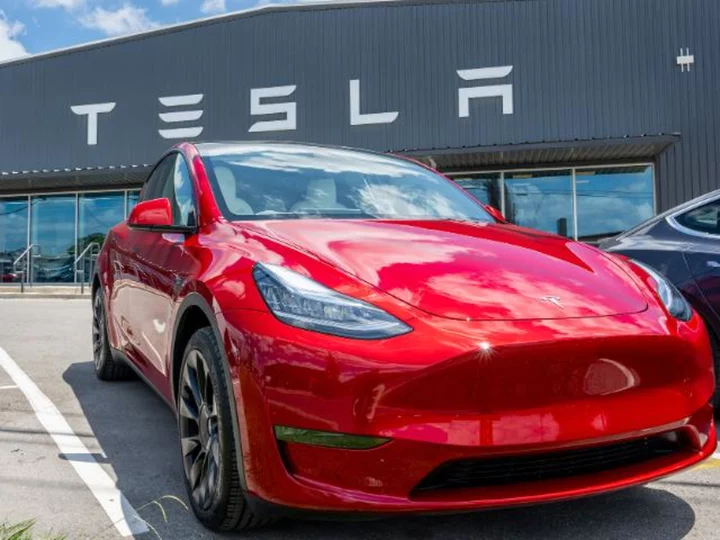
Safety regulators investigating steering on some Tesla models
The National Highway Traffic Safety Administration is investigating new Tesla Model 3 sedans and Model Y SUVs for a possible steering problem. The apparent issue could involve as many as 280,000 cars, according to a document on NHTSA's auto safety web site.
2023-08-01 23:28
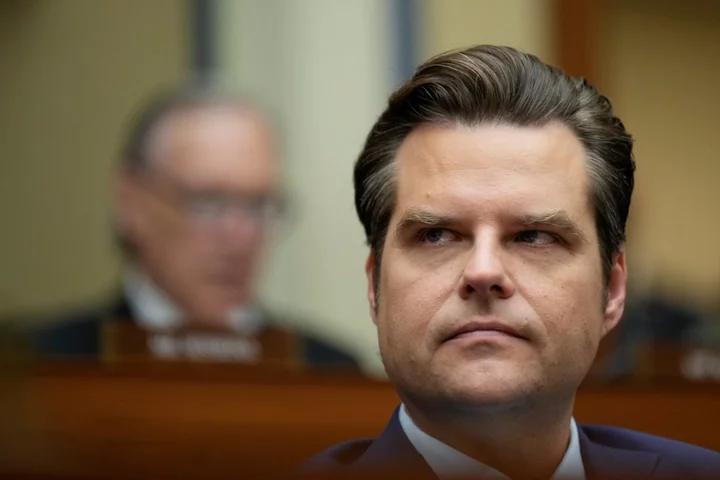
Matt Gaetz called a ‘murderer’ during an ‘all-time low’ anti-trans House committee hearing
As Republican-led states pass legislation to restrict or ban transgender youth from accessing gender-affirming healthcare, Republicans in Congress have held a series of hearings or steered discussion around implementing national bans while raising dubious claims and dismissing guidance from major medical groups. On 27 July, Democratic members of a Republican-led House committee condemned the latest “cynical and dangerous attack” on trans children and their families during one of the first congressional hearings against affirming care and health providers. The panel heard from a former college athlete who advocates against trans women and girls from participating in sports that match their gender, members of right-wing special interest groups that support legislation targeting LGBT+ people, and a person who formerly received affirming healthcare and now advocates against other receiving it. The committee also heard from a Texas mother whose 18-year-old son is transgender, as well as the trangender legal director of a prominent LGBT+ legal advocacy group. While Republican US Rep Matt Gaetz was railing against a law in Washington state that seeks to protect trans children estranged from their parents, a person watching the hearing from inside the chamber called the Florida congressman a “murderer”. “Oh please, get over yourself,” Mr Gaetz responded. Moments earlier, Republican US Rep Wesley Hunt used a poster of a food pyramid to compare children with gender dysphoria to children who want to eat ice cream for every meal. “What if we affirmed every thought our children had?” he said. Democratic US Rep Mary Gay Scanlon called the hearing a “cynical and dangerous attack on trans people and their families” motivated not by medical guidance but poll numbers, with Republican members “just repeating right-wing talking points to delegitimize” healthcare for trans youth, she said. “Today’s hearing is an all-time low for the Republican majority,” said Democratic US Rep Jerry Nadler. “In my three decades in Congress, I have taken part in plenty of hearings where I did not agree with the choice of topic, to say the least. I am absolutely disgusted at the Republican majority’s bullying, bigoted framing of an issue that would otherwise be worthy of serious discussion.” The New York congressman was furious, calling the hearing a “taxpayer-funded platform for congressional Republicans to bully transgender kids, who are already some of the most vulnerable members of our community”. “The last thing trans kids and their parents need in their lives is Republicans in Washington to jump on the anti-trans bandwagon just so they can fear monger for their five minutes of fame,” he added. The hearing – titled “Dangers and Due Process Violations of ‘Gender-Affirming Care’ for Children” – follows proposals from House lawmakers to strip support for affirming care for US military service members in a must-pass national defence bill, as well as a series of hearings and proposals that replicate the avalanche of legislation targeting trans people in nearly every state. By the end of May, state lawmakers had introduced more than 500 bills impacting LGBT+ people in 2023, including 220 bills specifically targeting trans and nonbinary Americans, according to an analysis from the Human Rights Campaign. Republican members of Congress have also introduced federal legislation that mirrors some of the proposals dominating state capitols. One measure would impose national restrictions on trans athletes, and another bill would impose a similar but more-expansive version of what critics have called state-level “Don’t Say Gay” bills used to restrict classroom discussion of LGBT+ people and events. Shannon Minter, legal director of the National Center for Lesbian Rights and the only trans person who addressed lawmakers, said in his opening statement that anti-trans legislation targets less than 1 per cent of the population as well as medication and supportive care regimens that have been widely available for decades. “They are not new. What is new is this recent massive overreach from state lawmakers,” he added. “These laws … they prevent doctors from doing their jobs, they prevent parents from getting medical care they need.” Stripping access to that care will have “devastating consequences for young people’s lives,” he said. “Decisions should be made by parents who love them, not by politicians who know nothing about a child’s life.” Miriam Reynolds, whose son Cameron is trans, shared the family’s journey to understanding what he was experiencing and working with health providers to “It was hard on me at first, but I was able to put my child’s needs before my feelings and find him the care he needed,” she said. “I could see that my child was happier and felt more and more comfortable the more he was affirmed.” There wasn’t any political “hysteria” surrounding his care when he came out several years ago, compared to the currently volatile environment surrounding his existence and the family’s support for him. “It’s absolutely heartbreaking,” she said. “To be looked at as a child abuser, or indoctrinator, or something like that, is extremely painful … It feels very hateful and divisive.” Mr Gaetz grilled Mr Minter about recently enacted Washington state law that allows shelters to first contact the state Department of Children, Youth and Families if trans children entering the facilities. “There’s no reason to treat these situations with transgender young people who may be in danger or at risk of abuse at home, any differently than we would treat any other child,” Mr Minter said. “I want authorities to treat these kids with the same care they treat all other children.” In his remarks, Mr Gaetz ironically defended the rights of “parents to parent” their children while dismissing families who have asked for the same right to support their trans children. “What’s terrible is when you have this incongruent desire of the government to restrain the abilities of parents to parent,” he said. Read More Ron DeSantis threatens legal action over Dylan Mulvaney’s Bud Light video How a Texas ban on gender-affirming care for trans youth could break healthcare for children across the state Trans youth and families condemn ‘heartbreaking’ Tennessee court ruling against gender-affirming care
2023-07-28 08:18

Daniel James injury blow for Wales ahead of Euro 2024 qualifier against Latvia
Wales will be without Daniel James for their crucial Euro 2024 qualifier against Latvia next month. Leeds winger James has been sidelined with an adductor injury and misses the crunch clash in Riga on September 11, as well as the Cardiff friendly against South Korea four days earlier. The 45-times capped James has been a regular since making his debut in 2018, starting 34 consecutive competitive games before the run came to an end last November. Wales boss Rob Page has named a 25-man squad for the September double-header as he seeks to revive the Dragons’ Euro 2024 qualification hopes. Back-to-back defeats against Armenia and Turkey in June have left Wales with an uphill task to secure an automatic route to the tournament in Germany next summer. Nottingham Forest forward and Tottenham target Brennan Johnson is included, and Tom Lockyer returns to the squad for the first time since his heart scare in May. The 28-year-old Luton captain collapsed just a few minutes into the Hatters’ Sky Bet Championship play-off final win over Coventry at Wembley. Lockyer underwent an operation to address an irregular heartbeat but has since returned to action to lead Luton in their first Premier League campaign. David Brooks is also present after scoring for Bournemouth in the Carabao Cup on Tuesday, his first senior goal since returning to action earlier this year following treatment for stage two Hodgkin lymphoma. Tottenham defender Ben Davies is available after missing the 2-0 Euro qualifying defeat to Turkey in June due to the birth of his first child. Page has named four goalkeepers in his squad – Danny Ward, Wayne Hennessey, Adam Davies and Tom King – but none of them have had any game-time this season. Kieffer Moore and Joe Morrell are both suspended for the Latvia qualifier after picking up red cards in June. The pair received two-game bans, with Bournemouth striker Moore serving the first part of his suspension in Turkey after being sent off against Armenia. Portsmouth midfielder Morrell saw red against Turkey in Samsun and will also miss the October qualifier with Croatia. Both players have been included in Page’s squad and can feature against Jurgen Klinsmann’s South Korea in Cardiff on September 7. Bolton midfielder Josh Sheehan returns to the squad for the first time since September 2021 and Wes Burns is also included. Midfield pair Luke Harris and Ollie Cooper drop out. Full squad: W Hennessey (Nottingham Forest), D Ward (Leicester), A Davies (Sheff Utd), T King (Wolves), B Davies (Tottenham), M Fox (QPR), J Rodon (Leeds, on loan from Tottenham), B Cabango (Swansea), C Mepham (Bournemouth), T Lockyer (Luton), N Williams (Nottingham Forest), C Roberts (Burnley), W Burns (Ipswich), E Ampadu (Leeds), J Sheehan (Bolton), J James (Birmingham), J Morrell (Portsmouth), H Wilson (Fulham), A Ramsey (Cardiff, captain), K Moore (Bournemouth), N Broadhead (Ipswich), B Johnson (Nottingham Forest), D Brooks (Bournemouth), T Bradshaw (Millwall), L Cullen (Swansea). Read More Charity boss speaks out over ‘traumatic’ encounter with royal aide Ukraine war’s heaviest fight rages in east - follow live England Women to get same match fees as men after Ashes summer boosts profile Raphael Varane knock adds to Manchester United’s injury problems Football rumours: Chelsea eye late move for Ivan Toney in transfer window
2023-08-30 18:17
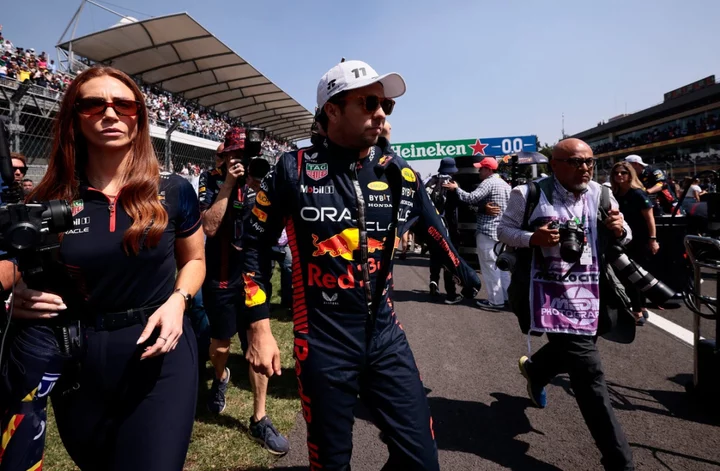
Max Verstappen gives blunt verdict on Sergio Perez’s Mexico Grand Prix crash
Max Verstappen believes his Red Bull teammate Sergio Perez crashed out of the Mexican Grand Prix because he was overexcited by the prospect of finishing on the podium at his home race. Perez tried to brake last as he arrived on the inside of the first bend alongside Ferrari’s Charles Leclerc in the centre and Verstappen on the outside. His Red Bull slammed into Leclerc and leapt into the air before coming down in the run-off area. He managed to crawl round to the pitlane, and Red Bull mechanics soon had him back on the road, but they threw in the towel after only five more laps. Verstappen went on to win his 51st race as Perez watched on from the garage. “I mean, I understand because it’s his home Grand Prix,” Verstappen said, assessing the crash. “You want to be on the podium, I fully understand that. “He went around the outside, and he tried. Looking at the footage, I think he could have left a little bit more space, but at the other end if it would have worked, you know, you look amazing. And of course, I think it’s just more like that excitement of wanting to be on the podium and this time it didn’t work out, unfortunately.” Verstappen added: “At the time, I didn’t really see a lot. At one point, I just saw that a car was a bit flying in the air, but then I saw the footage after the race and then you can comment on it. But while driving it’s a bit hard because I was mainly focusing on Charles, because I couldn’t see what was happening on the outside.” Perez’s position at Red Bull has come under scrutiny in recent weeks and his performance in Mexico will only have added to speculation that his seat may be going to Daniel Ricciardo next season. Perez last won a race in Azerbaijan on 30 April, and his failure to finish at the Autodromo Hermanos Rodriguez leaves his second place in the championship under threat from Hamilton. Indeed, the seven-time world champion reduced the gap from 39 points to 20 with his strong display. TOP-10 - MEXICO CITY GRAND PRIX 1) Max Verstappen 2) Lewis Hamilton (+ fastest lap) 3) Charles Leclerc 4) Carlos Sainz 5) Lando Norris 6) George Russell 7) Daniel Ricciardo 8) Oscar Piastri 9) Alex Albon 10) Esteban Ocon Perez told DAZN after the race: “I’m sad without a doubt because today was my opportunity. I had a very good start and I was only thinking of winning the race. I didn’t want to be on the podium. I’ve been on the podium two years in a row. “I saw the opportunity and I went for it. In hindsight, I took a risk, but if I had pulled it off I would have come out of Turn 1 in the lead. I didn’t expect Charles to brake so late since he was the car in the middle. He had a lot less margin than Max, who was on the inside, and I was the one who could brake the latest because I was on the outside.” Read More Christian Horner drops Daniel Ricciardo hint as pressure mounts on Sergio Perez Kevin Magnussen’s car catches fire after high-speed crash in Mexico F1 fan banned for life after attacking Ferrari supporters in Mexico
2023-10-30 18:18

New Jersey ‘Lawyering Up’ Over Congestion Tax, Murphy Says
New Jersey is pursuing legal options to block New York’s congestion pricing plan that would charge motorists entering
2023-07-06 22:17
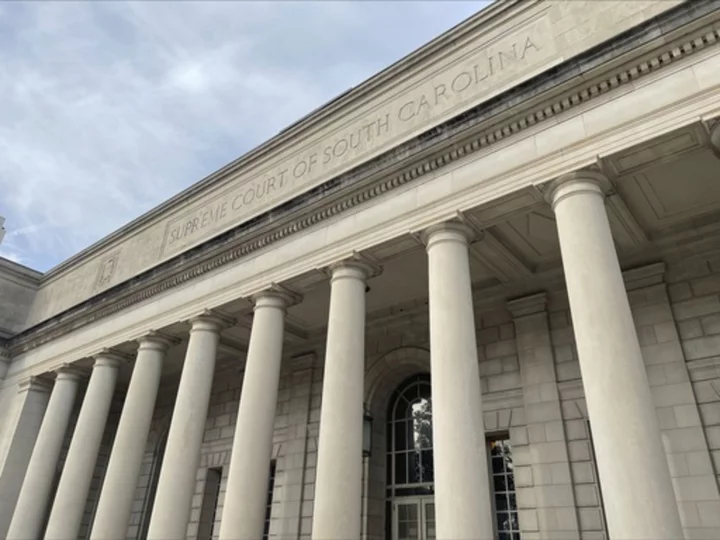
Supreme Court Justice Kavanaugh predicts "concrete steps soon" to address ethics concerns
U.S. Supreme Court Justice Brett Kavanaugh has told attendees at a judicial conference in Ohio that addressing recent ethics concerns can increase public confidence in the institution
2023-09-08 02:53
You Might Like...
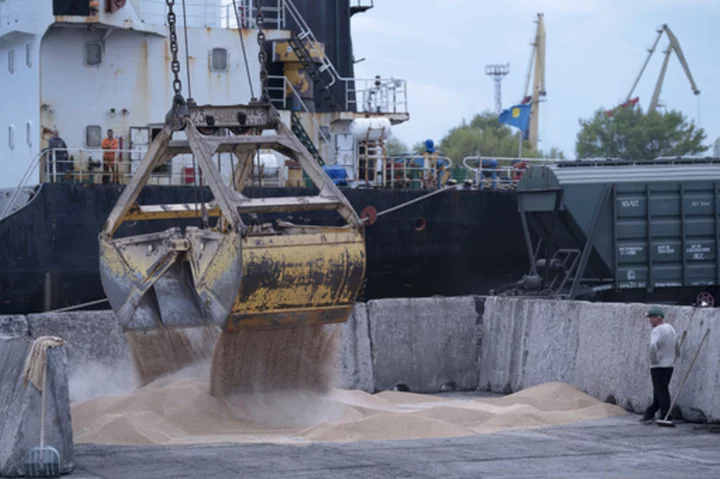
Ukraine wants ships to keep exporting its grain despite Russian attacks. Some are interested
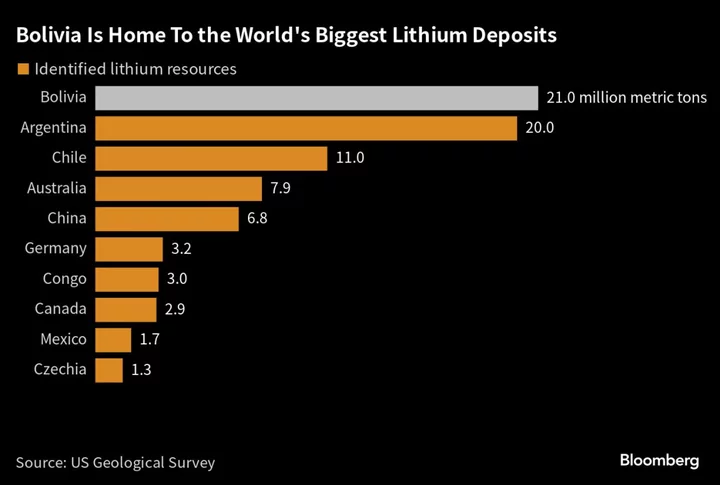
China’s CATL Leads $1.4 Billion Lithium Investment in Bolivia

Israel central bank says digital shekel launch an 'open question'

Why is village government buying Rex Heuermann's home? Town to purchase alleged Gilgo Beach killer's property swarmed by gawkers
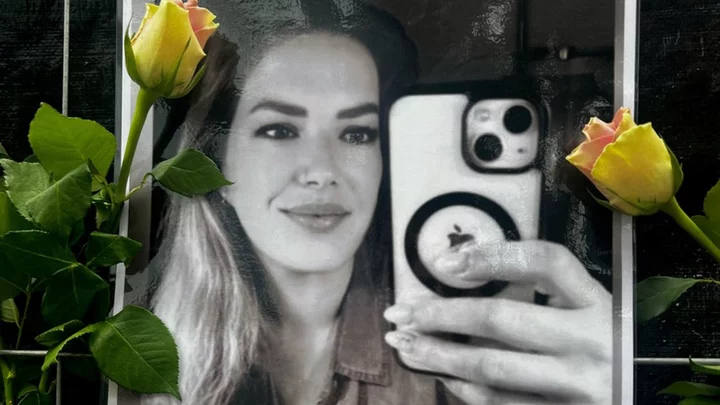
Rotterdam shootings: Hospital was warned of 'psychotic' suspect
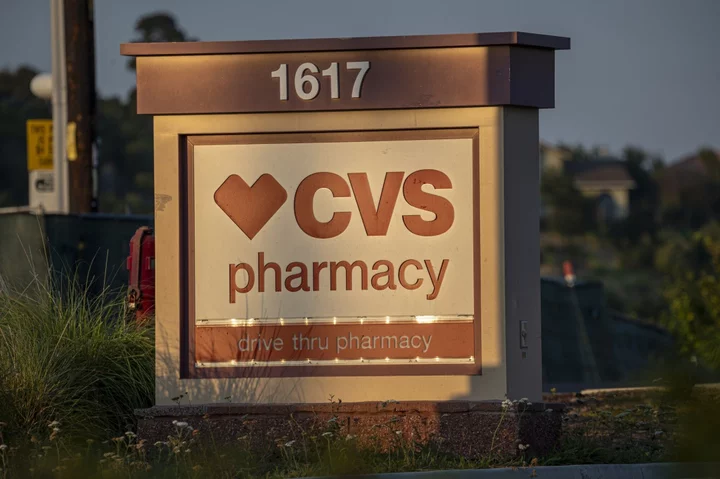
CVS Beats Quarterly Profit, Sales Estimates Amid Cost Cuts

US pledges to help Australia manufacture guided missiles by 2025
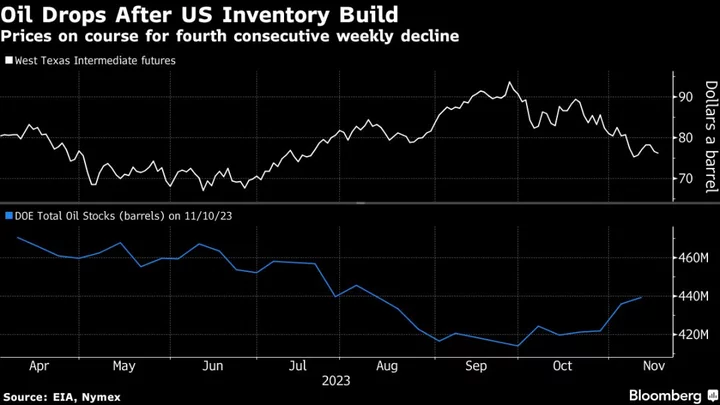
Oil Extends Slide After US Inventories Swell to Three-Month High
